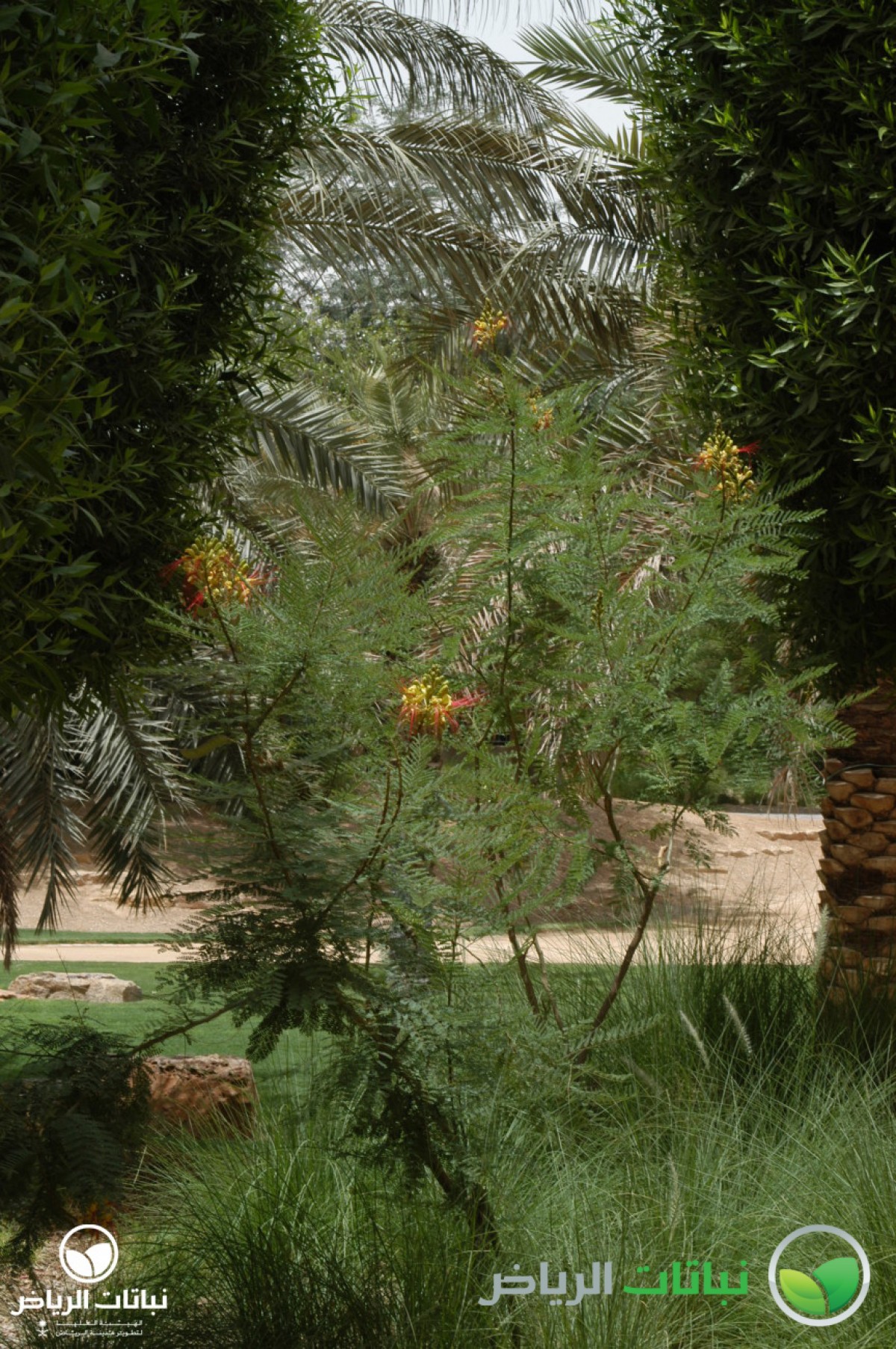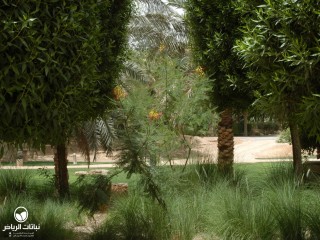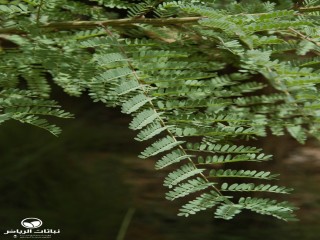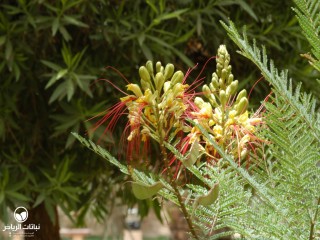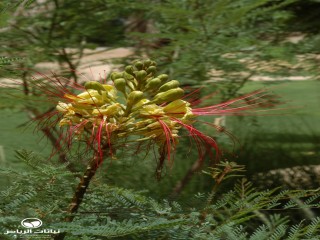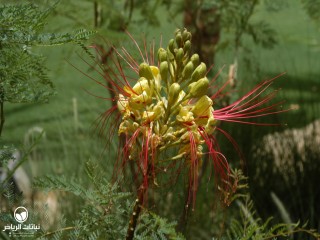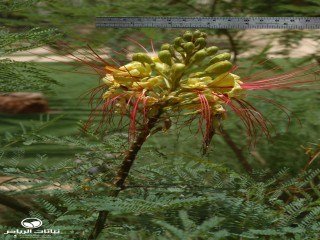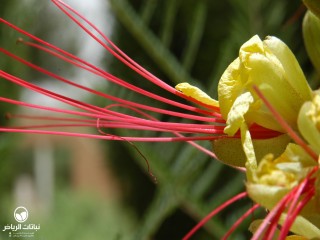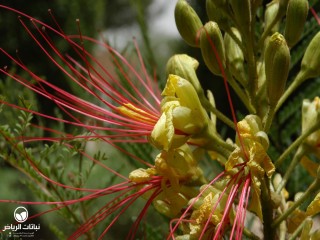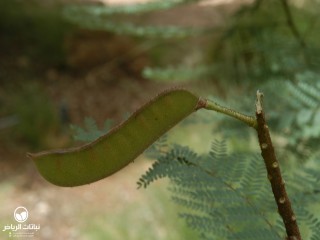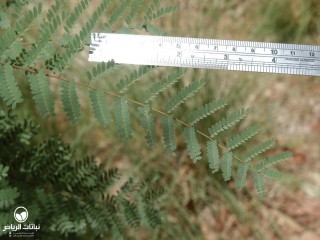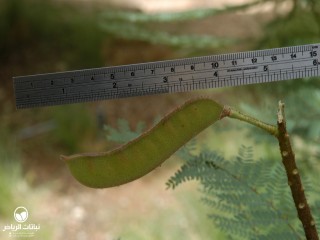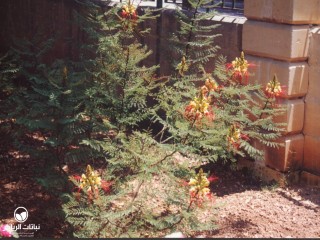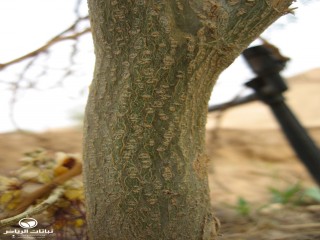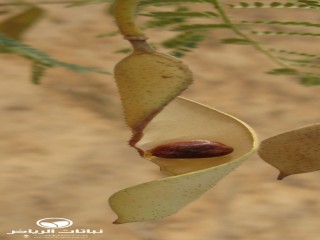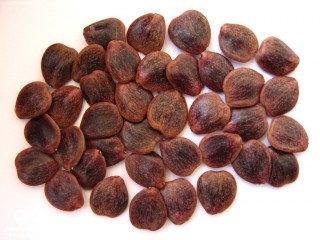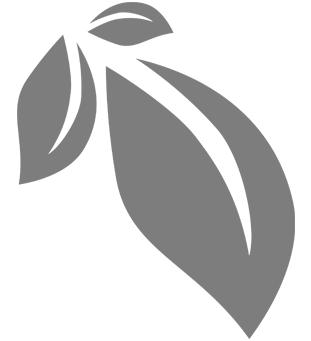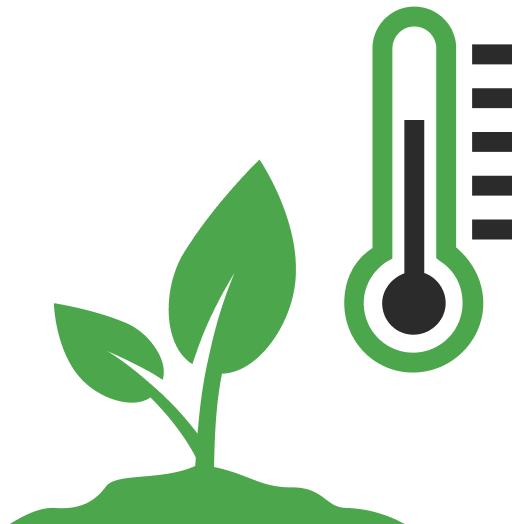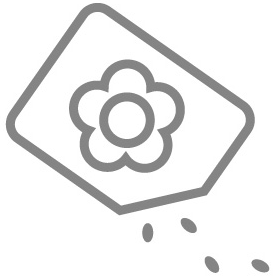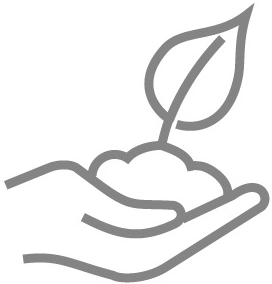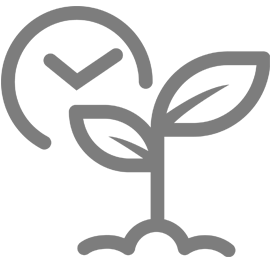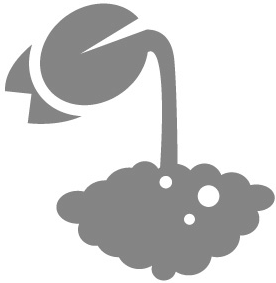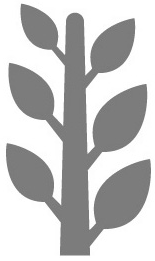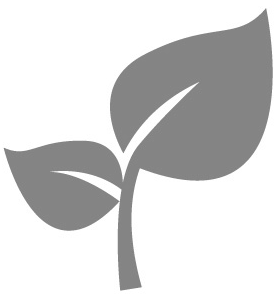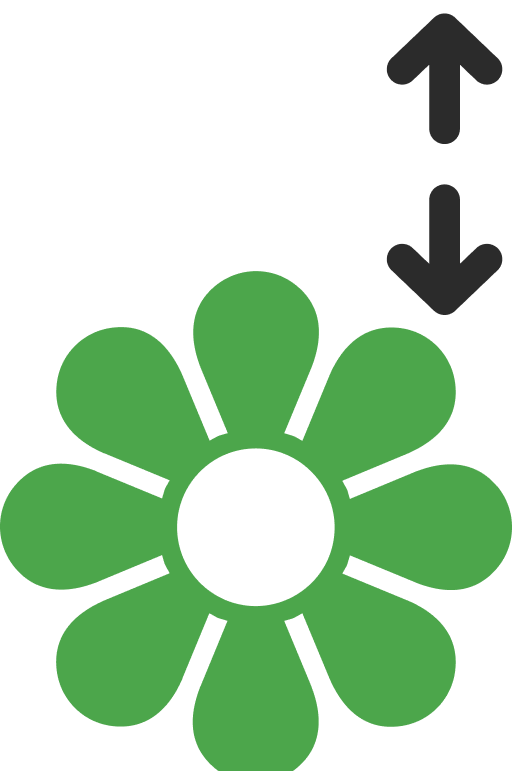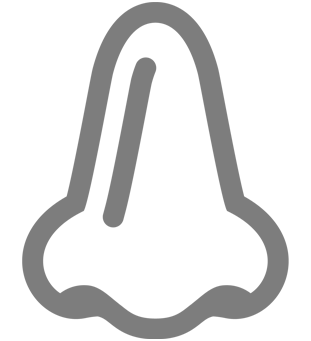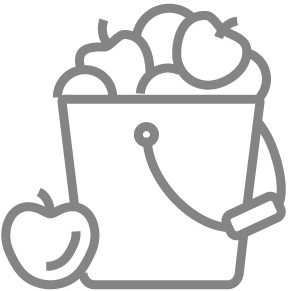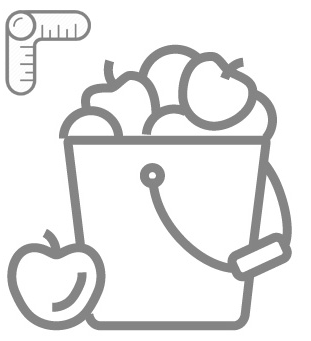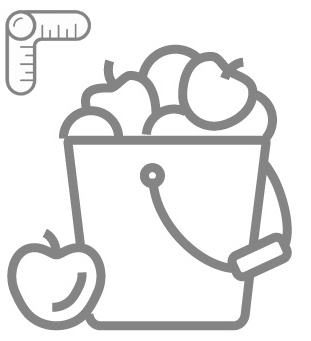Riyadh Plants
Yellow Bird-of-Paradise Shrub, bonsiana gillias
The Yellow Bird-of-Paradise, known in Arabic as bonsiana gillias, is native to South America, but may sometimes naturalise without becoming invasive. It is a popular shrub for the desert landscape, thriving in heat and drought, although its relative, C. pulcherrima, is more often seen in Arriyadh, because it is more showy. Light frosts to –6°C, as may occur in Arriyadh, do not have any real impact, since the shrub tends to be leafless in winter and quickly comes back into growth in the spring. It will withstand poor conditions at the cost of its showy flowers; however, it rewards better soil and irrigation with rapid growth to about 2 metres in height and width. In summer, clusters of numerous yellow leguminous pea-flowers feature long protruding red stamens. These are certainly among the most exotic inflorescences produced by shrubs. Open in form, shrubs have slender, irregular branches with finely cut deciduous leaves. The brown pods are spotted and contain poisonous seeds that easily germinate when scarified and germinated. Little pruning is required to keep an attractive shape, but heavy pruning every few years results in rejuvenation. Landscape uses include flowering hedges and massed plantings, or as a showy specimen in parks and pedestrian precincts. During establishment, the soil should be kept moist while established plants will tolerate drought with occasional deep watering in summer. Slow-release fertilisers may be applied in spring. Low maintenance: pruning is necessary only to develop its natural growth habit.
